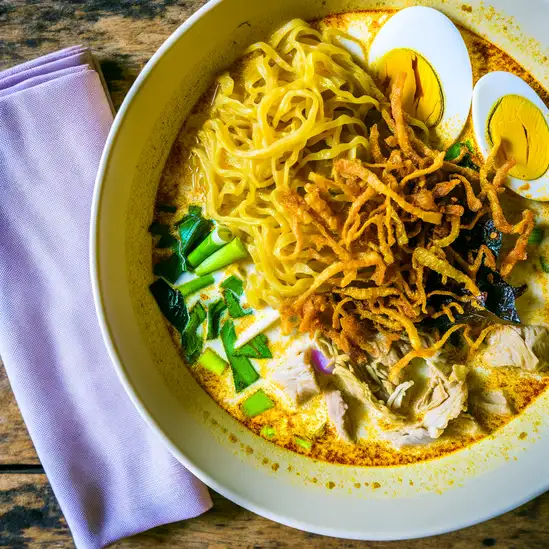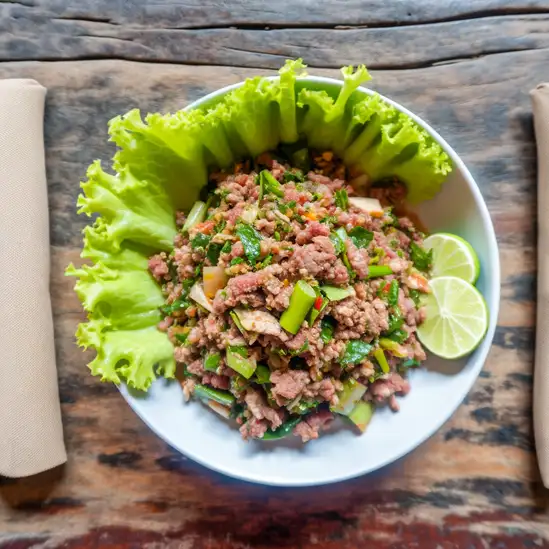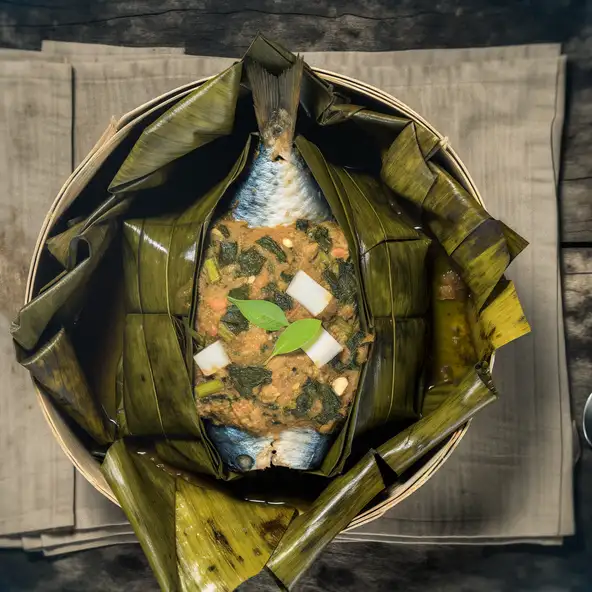


Pakse has this laid-back charm that instantly wraps around you like a warm,familiar blanket. Nestled where the Mekong and Xe Don rivers meet,the city hums with a gentle rhythm—motorbikes buzzing past,vendors calling out their fresh fruit,and the distant clang of temple bells. Walking through its streets,you’ll catch the scent of grilled fish mingling with fragrant herbs and the earthy aroma of freshly brewed Lao coffee,making every corner feel alive and inviting. What really makes Pakse special is how it balances the old and new. You’ll find monks in saffron robes quietly meditating beside bustling markets where locals haggle over sticky rice and tropical fruits. The city’s colonial architecture stands shoulder to shoulder with vibrant street art,telling stories of its past and present. It’s a place where time slows down just enough for you to savor the simple pleasures—like sipping a cold Beerlao by the river as the sun dips behind the lush hills. Beyond the city,the surrounding landscape is a playground for adventurers and dreamers alike. Waterfalls cascade through dense jungle,and ancient temples peek out from the greenery,inviting exploration. But back in Pakse,it’s the people who leave the biggest impression—their genuine smiles,easy laughter,and the way they welcome you into their world without pretense. If you want a trip that feels both grounding and inspiring,Pakse quietly waits with open arms.
The information on this page is currently being reviewed by Tripkliq and should be used as a guide only
Eng word: Hello
Eng pronunciation: sa-bai-dee
Local language: ສະບາຍດີ
Eng word: Goodbye
Eng pronunciation: la-gon
Local language: ລາກ່ອນ
Eng word: Thank you
Eng pronunciation: khawp-jai
Local language: ຂອບໃຈ
Eng word: How much
Eng pronunciation: thao-dai
Local language: ເທົ່າໃດ
Eng word: Toilet
Eng pronunciation: hong-nam
Local language: ຫ້ອງນ້ຳ
Eng word: Help me
Eng pronunciation: suay-khoi-nae
Local language: ຊ່ວຍຂ້ອຍແນ່
Eng word: Yes
Eng pronunciation: maen-laew
Local language: ແມ່ນແລ້ວ
Eng word: No
Eng pronunciation: bo
Local language: ບໍ່
Eng word: Excuse me
Eng pronunciation: khor-thot
Local language: ຂໍໂທດ
Pakse was founded by the French in 1905 during their colonial rule over Laos. It served as an important administrative and trading center in the region.
The Champasak Palace, also known as the 'Palace of the Last Prince,' was built in the 1960s for Prince Boun Oum Na Champassak. Today, it serves as a hotel and a historical landmark.
Wat Luang is one of the largest and most significant temples in Pakse. It was built in 1935 and serves as a center for Buddhist worship and community activities.
Pakse features several buildings with French colonial architecture, reflecting its history as part of French Indochina. These structures add a unique charm to the city.
The Lao Nippon Bridge, commonly known as the Pakse Bridge, was completed in 2000. It spans the Mekong River and connects Pakse to the Bolaven Plateau, facilitating trade and travel.
Located near Pakse, the Bolaven Plateau is known for its stunning waterfalls, coffee plantations, and cool climate. It was a strategic area during the French colonial period.
The Wat Phou Festival, held annually in February, celebrates the ancient Khmer temple complex of Wat Phou. The festival includes traditional music, dance, and religious ceremonies.
The Pakse Market, also known as Dao Heuang Market, is one of the largest in southern Laos. It offers a variety of local goods, including fresh produce, textiles, and handicrafts.
During World War II, Pakse was occupied by Japanese forces. After the war, it returned to French control until Laos gained independence in 1953.
In Pakse, the most common Power Adaptor is Type C, Type E, Type F.







A noodle soup featuring egg noodles in a rich coconut curry broth, typically garnished with pickled mustard greens and shallots.

A traditional Lao salad made with minced meat (usually chicken, beef, or fish), mixed with herbs, lime juice, and toasted rice powder.

A spicy green papaya salad that combines shredded papaya, tomatoes, lime, fish sauce, and chili, often served with sticky rice.

Sticky rice that is a staple in Lao cuisine, often served alongside various dishes and used to scoop up food.

A steamed fish dish wrapped in banana leaves, flavored with herbs, spices, and sometimes coconut milk.

A flavorful Lao sausage made from minced pork, herbs, and spices, often grilled and served with fresh vegetables.

Sticky rice cooked inside bamboo tubes, giving it a unique flavor and texture, often enjoyed as a snack or side dish.
If you ever find yourself wandering through Luang Prabang,you’ll immediately notice a gentle calm that seems to wrap around the town like a soft,warm blanket. It’s the kind of place where mornings start with the quiet shuffle of monks in saffron robes collecting alms,their presence weaving a peaceful rhythm into the day. The air carries a mix of fragrant incense,fresh river breeze,and the subtle sweetness of grilled street food wafting from the night market. Walking along the Mekong River at sunset,the sky blushes in shades of pink and gold,reflecting off the water and making everything feel a little more magical.
The city’s charm lies in its blend of old and new — colonial French architecture stands side by side with ancient Buddhist temples,their intricate carvings telling stories that have lasted centuries. You can lose yourself in narrow streets lined with wooden houses,each corner revealing a quiet café or a bustling market stall selling sticky rice wrapped in banana leaves or freshly brewed Lao coffee that’s rich and earthy. The locals greet you with genuine smiles,and there’s a softness in their hospitality that makes you feel like you’re more than just a visitor.
What really makes Luang Prabang unforgettable is how it invites you to slow down and savor the moment. Whether you’re watching the monks’ morning procession,exploring hidden waterfalls nearby,or simply sitting by the river with a cold Beerlao in hand,the city encourages a kind of mindful joy that stays with you long after you leave.
Siem Reap feels like stepping into a living storybook where ancient history and vibrant local life dance together effortlessly. The moment you arrive,there’s this warm,inviting energy—friendly smiles from tuk-tuk drivers,the hum of motorbikes weaving through bustling markets,and the scent of lemongrass and grilled street food mingling in the air. It’s a place where the past isn’t just preserved behind glass but pulses through every corner,especially when you wander the awe-inspiring temples of Angkor at sunrise,watching the soft golden light spill over intricate stone carvings and jungle vines.
Beyond the temples,the town itself is a lively mosaic of colorful markets,cozy cafés,and lively night bazaars. You’ll hear the chatter of locals bargaining over fresh produce,the clinking of glasses in open-air bars,and the occasional traditional Khmer music drifting from a nearby restaurant. The food scene is a delicious adventure—imagine biting into a crispy,fragrant fish amok or savoring sweet mango sticky rice while sitting under a canopy of twinkling lights.
What really makes Siem Reap special is its balance of old and new,calm and excitement. You can spend your mornings exploring centuries-old ruins and your afternoons relaxing with a foot massage or cycling through rice paddies. It’s a place that invites you to slow down,soak in the stories,and feel connected—not just to Cambodia’s rich heritage but to the warm-hearted people who call it home.
Phnom Penh feels like a city caught between moments—where the past and present hum together in a lively,unexpected rhythm. Walking along the riverfront at sunset,you’ll catch the warm glow of golden light bouncing off the Tonle Sap and Mekong rivers,while the chatter of locals and the distant honk of tuk-tuks create a soundtrack that’s both chaotic and comforting. The air carries a mix of aromas:sizzling street food,fresh herbs,and the faint scent of incense from nearby temples. It’s a place where history isn’t just in museums but etched into the streets and faces of the people.
The city’s character is raw and real,with grand colonial buildings standing shoulder to shoulder with bustling markets and sleek new cafes. You can lose yourself in the maze of Russian Market stalls,where vendors call out in a friendly,rapid-fire Khmer,offering everything from handwoven scarves to spicy grilled meats. At night,the city pulses with energy—bars and eateries spill onto sidewalks,and the smell of lemongrass and chili fills the air as you try dishes like fish amok or fresh spring rolls.
What makes Phnom Penh truly unforgettable is its resilience and warmth. Despite its turbulent history,the city welcomes you with open arms and a genuine smile. It’s a place where every corner tells a story,and every meal,every conversation,feels like an invitation to understand a culture that’s vibrant,complex,and deeply human.
Bangkok is one of those cities that grabs you the moment you step out into its bustling streets. There’s this electric energy in the air—a mix of honking tuk-tuks,sizzling street food stalls,and the chatter of locals weaving through markets. The city feels alive,like it’s constantly moving and breathing,yet somehow it balances this chaos with moments of serene beauty,like the golden spires of temples catching the afternoon sun or quiet canals reflecting the sky.
Walking through Bangkok,you’ll be hit by a whirlwind of scents:fragrant jasmine from flower vendors,the sharp tang of lemongrass and chili from street carts,and the sweet aroma of mango sticky rice tempting you at every corner. The colors are just as vivid—neon signs flicker alongside traditional wooden shophouses,and monks in saffron robes glide past modern skyscrapers. It’s a city where old and new dance together effortlessly.
What really makes Bangkok special is its warmth and openness. The people here have a genuine kindness that shines through,whether you’re bargaining at Chatuchak Market or sharing a laugh over a bowl of spicy boat noodles. The culture is rich and layered,from the intricate rituals at Wat Pho to the lively festivals that light up the streets. Visiting Bangkok feels like stepping into a story that’s still unfolding,full of surprises and moments that stay with you long after you leave.
Ho Chi Minh City pulses with an energy that’s impossible to ignore—like the city itself is alive,breathing through its bustling streets and vibrant markets. The moment you step out,you’re greeted by a symphony of honking scooters weaving through the maze of narrow alleys,the sizzling sound of street food grilling on every corner,and the rich aroma of fresh herbs mingling with strong Vietnamese coffee. It’s chaotic but in the best way,a place where tradition and modernity collide in colorful,unexpected ways.
Walking through District 1,you’ll catch glimpses of French colonial architecture standing proudly beside sleek skyscrapers,while locals sip iced cà phê sữa đá at tiny plastic stools,chatting animatedly. The city’s character is raw and real—no polished tourist traps here,just genuine moments and warm smiles. At night,the streets transform as neon signs flicker on,and the scent of grilled seafood and sweet bánh mì fills the air,inviting you to taste the city’s soul.
What makes Ho Chi Minh City truly unforgettable is its resilience and spirit. It’s a place where history whispers from the War Remnants Museum and the Cu Chi Tunnels,yet life moves forward with a youthful,entrepreneurial buzz. Whether you’re savoring a bowl of pho at dawn or exploring vibrant art galleries and rooftop bars,the city wraps you in its embrace,making you feel like you’re part of its ongoing story.
Imagine stepping into a place where the ocean breeze carries the scent of salt and sizzling street food,and the rhythm of life feels both relaxed and vibrant—that’s Da Nang. This city pulses with an easygoing energy,where modern skyscrapers stand alongside ancient temples,and the laughter of locals blends with the gentle crash of waves. Walking along the Han River at dusk,you’ll catch the golden glow of the Dragon Bridge lighting up the night,its fiery breath a spectacle that feels almost magical.
Da Nang’s streets are alive with the aroma of fresh seafood grilling on open flames,mingling with the sweet fragrance of tropical fruits from bustling markets. The city’s character shines through its people—warm,welcoming,and proud of their rich heritage. You can hear the chatter of vendors,the clinking of glasses in cozy cafes,and the distant hum of motorbikes weaving through traffic,all creating a soundtrack that’s uniquely Da Nang.
What really sets this city apart is its blend of natural beauty and cultural depth. Just a short ride away,you can explore the Marble Mountains,where limestone caves and pagodas invite quiet reflection,or relax on My Khe Beach,feeling the soft sand between your toes. And when night falls,the city transforms with lively night markets and riverside bars,where you can savor local dishes like mi quang or fresh spring rolls,each bite bursting with flavor and history. Da Nang isn’t just a place to visit—it’s a place to feel alive.
Tourists may be sold bus tickets at inflated prices or for non-existent 'VIP' services that turn out to be standard buses.
Some money exchange services may use incorrect rates or give counterfeit bills to tourists unfamiliar with the local currency.
Individuals may approach tourists claiming to collect donations for schools, temples, or charities, but the money is pocketed instead.
Unlicensed individuals may pose as tour guides, offering subpar or incomplete tours at high prices.
Rental shops may claim damages to motorbikes that were pre-existing and charge tourists exorbitant repair fees.
Vendors in tourist-heavy areas may charge significantly higher prices for souvenirs, assuming tourists won't negotiate.
In crowded markets or tourist areas, pickpockets may target tourists, especially those carrying bags or valuables openly.
Some restaurants may add hidden fees or inflate bills, especially if tourists don't carefully check the menu or receipt.
At some temples, tourists may be pressured into making large donations or paying for blessings that are typically free or optional.
Tuk-tuk drivers may quote inflated prices for short rides, especially if tourists are unfamiliar with local rates.
Laos has very strict laws regarding drug use, possession, and trafficking. The penalties for drug-related offenses are severe and can include long prison sentences, heavy fines, and even the death penalty for serious offenses. Tourists should avoid any involvement with illegal drugs and be aware that even small quantities can lead to significant legal consequences.
In Pakse, Laos, smoking is generally allowed in public places, but there are restrictions in certain areas such as hospitals, schools, and government buildings. It is advisable to look for designated smoking areas and to be considerate of local customs and non-smoking zones. Smoking is also prohibited in some indoor public spaces like restaurants and bars, depending on the establishment's policies.
Vaping is less common in Laos compared to smoking, and there are no specific regulations that distinguish vaping from smoking. Therefore, it is best to follow the same rules as smoking. Avoid vaping in non-smoking areas and be mindful of local customs and sensitivities.
What are other people saying about Pakse?
Recent Social posts about Pakse
There is nothing to show you for now.